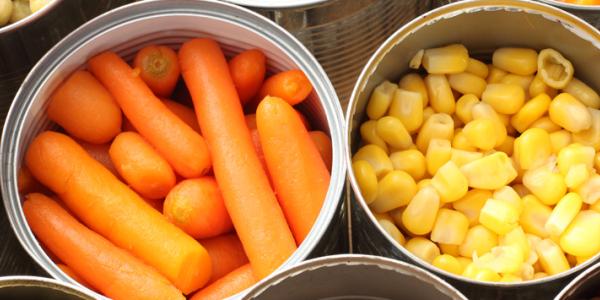
Cooking with pantry staples is an essential skill allowing you to whip up quick and healthy meals at a moment’s notice.
In the wake of the COVID-19 pandemic, the need for easy meals using accessible ingredients is on par with that for nutrient-dense dishes.
Skip
Food Nourishes Your Body on a Cellular Level
The food you eat nourishes your body on a cellular level, supporting your ever important immune system. From lymphocytes to neutrophils, and cytokines to macrophages, our immune system warriors require high quality, regular nourishment to serve us well.
Eating a diet grounded in whole and minimally processed foods, which contain vital vitamins, minerals, fiber, antioxidants and more, is one of your best tools for creating a strong immune system. While this may seem daunting given limited grocery store trips and difficulty obtaining your go-to ingredients, now is the time to lean into pantry and freezer staples to get simple and nourishing meals on the table.
Meal Planning Made Easy
Whether you are preparing meals for yourself or a family, meal planning does not have to be complicated, time consuming or stressful. When it comes to planning meals, use this simple formula as your guide to ensure your plate is balanced and packed with the nutrients you need to thrive:
Lots of vegetables + some protein + some whole grain + a little healthy fat + flavor + a serving of fruit = nutrient-dense deliciousness
When we break it down like that, it doesn’t seem as daunting, right? Here are some examples:
- Italian Pasta Salad: Whole grain penne (whole grain) tossed with canned white beans (protein), canned artichoke hearts (vegetable), arugula (vegetable) and balsamic vinaigrette (fat and flavor), served with pear slices (fruit).
- Teriyaki Stir Fry: Frozen mixed vegetables (vegetables) and edamame (protein) stir fried with teriyaki sauce (fat and flavor) served over brown rice (whole grain) with an apple (fruit) on the side.
- California Wrap: Whole grain tortilla (whole grain) filled with mustard (flavor), hummus (protein), sliced avocado (fat) and slaw mix (vegetables). Serve with mandarin oranges (fruit) on the side.
Balancing your plate at meal times is key to meeting your nutrient needs, feeling satiated and energized and reducing your risk for chronic and infectious disease. While in-shelter, there are several pantry and freezer items that fit into each of these categories and which we will highlight below.
Pantry Friendly & Immune-Boosting Shopping List
Having the right ingredients on hand is important for making meal times an easy and enjoyable experience. The following list of pantry and freezer items are long-lasting staples will be your secret weapon for getting healthy meals on the table with ease.
- Beans, Peas & Lentils. Canned or dried, beans, peas and lentils are shelf-stable and packed with protein, fiber, vitamins and minerals. If canned, select no salt added varieties, and feature them in salads, soups, nourish bowls and veggie burgers. Try swapping regular noodles for lentil or chickpea pasta for almost double the protein and triple the fiber.
- Whole Grains. Oats, brown rice, quinoa and more. Dry grains are the least expensive, but shelf-stable pouches or precooked frozen versions are also available. Opt for no salt or oil added, which you can add spices to for flavor. Whole grain breads, tortillas, English muffins and pizza crusts are also good options and can be stored in the freezer.
- Frozen Fruits & Vegetables. Picked and frozen at peak ripeness, frozen produce are equally, if not more, nutritious than their fresh counterparts. Stock up on frozen medleys or pick a few favorites.
- Hearty Produce. Beets, carrots, parsnips, potatoes, sweet potato, onions, garlic and turnips are hearty vegetables that can last for months when stored properly. Apples, pears and citrus are heartier fruits that stay crisp and juicy in the refrigerator for extended periods, and packaged slaw mixes are the longest lasting bagged greens. If you purchase fresh produce that is more perishable in nature, such as lettuce, mushrooms or cucumber, make sure to use them first in your meal planning rotation.
- Nuts and Seeds. Small but mighty, nuts and seeds are rich in protein, fiber, and heart healthy fats. Select raw unsalted nuts and seeds, and natural nut and seed butters with no added fat, sugar or salt. A little goes a long way in providing something special to both savory and sweet dishes.
- Condiments and Spices. In addition to the basics like salt, pepper and mustard, fill your pantry with ethnic flavors like turmeric, cumin, curry powder, cinnamon, ginger, cayenne, salsa, vinegars, nutritional yeast and more. Keep a jar of pesto, tomato sauce and curry on hand. Adding spices and flavorings is the simplest and most powerful way to create varied and enticing dishes.
- Prepared Foods. For those nights when cooking is not in the cards, lean on frozen bean burritos, canned lentil vegetable soups or other prepared dishes. Look at the ingredient list and the nutrition facts panel. Compare products and select those with less saturated fat, sodium and added sugar. Pair these items with frozen vegetables and a piece of fruit for a balanced no fuss meal.
Now that you’ve stocked your kitchen with a variety of healthful food items, it’s time to get creative in the kitchen. Turn on some tunes, and ask yourself important questions like what sounds good and what would feel nourishing in your body. Couple that with practical information like your meal planning formula and what ingredients you have on hand to create a wholesome and flavorful meal.

